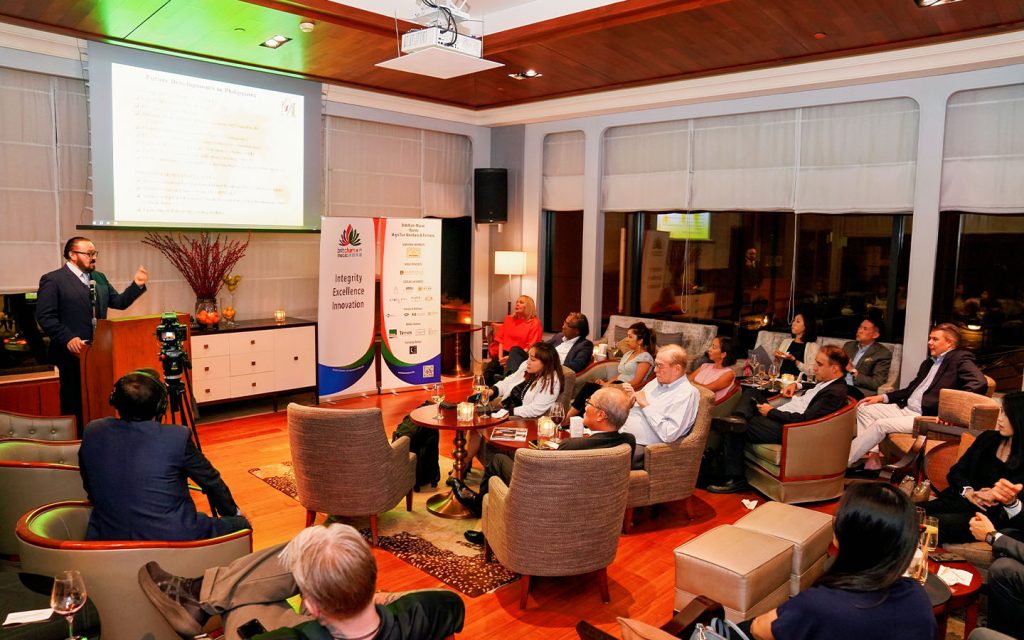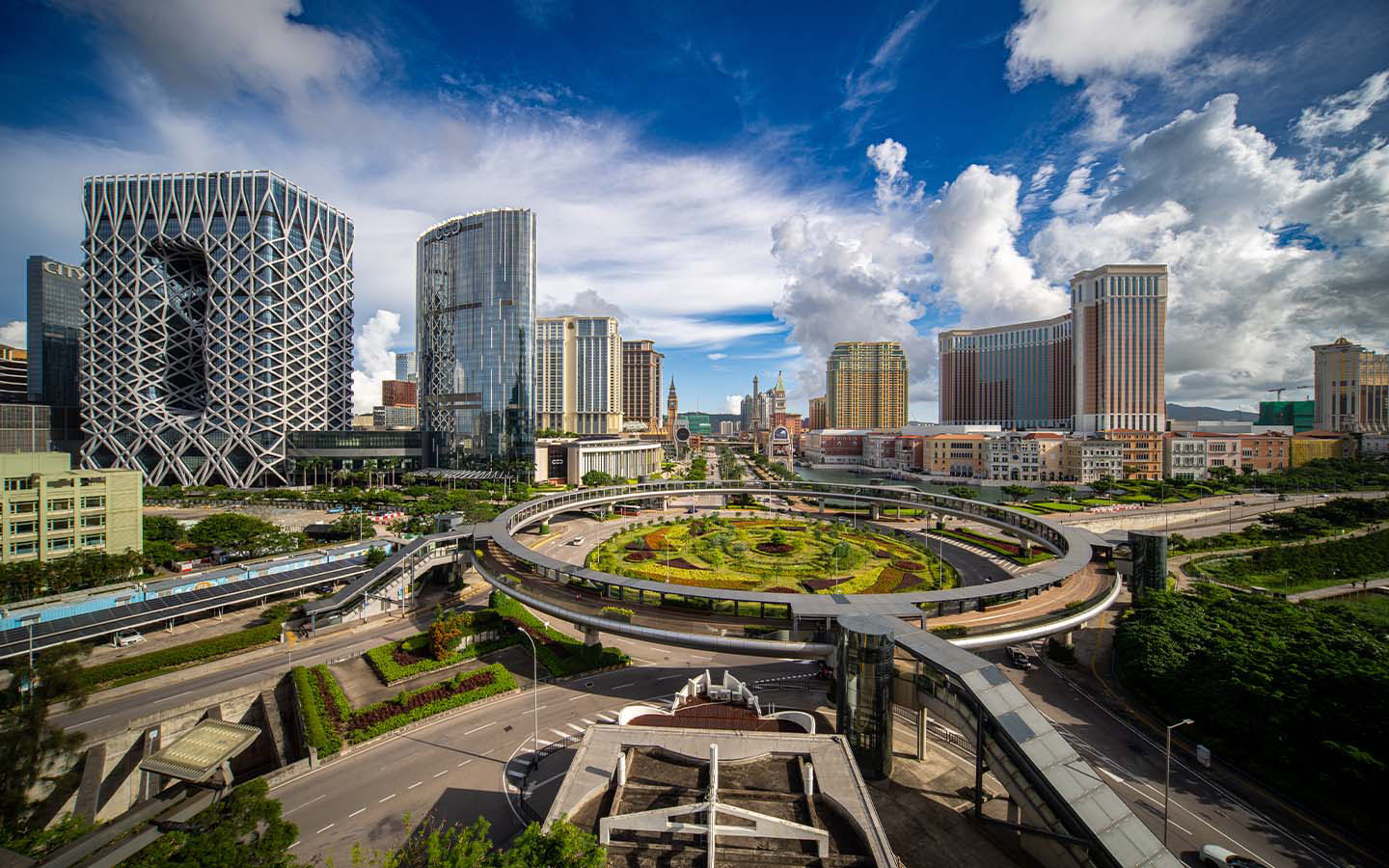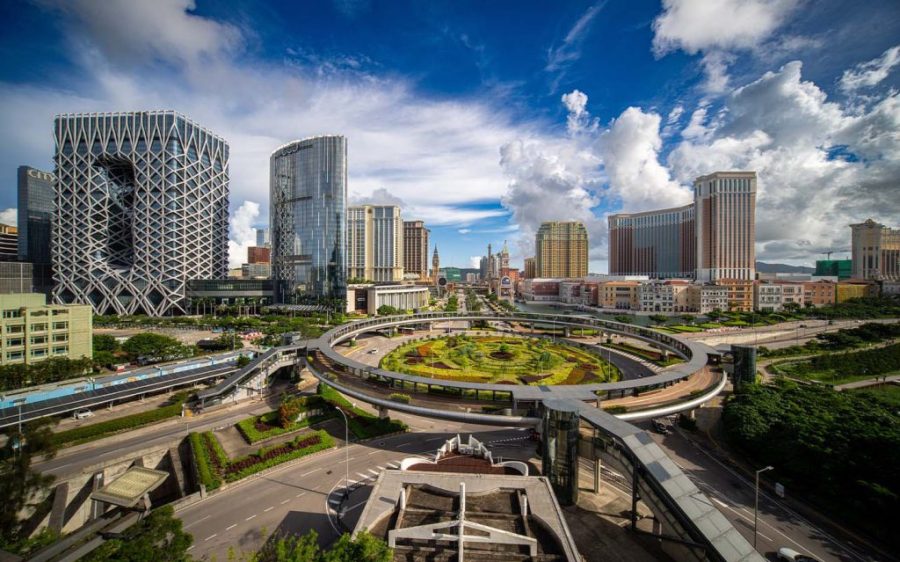Despite its reputation for slot machines and poker tables, Las Vegas’s gaming activities will account for only 26 percent of tourism revenue this year, commented gaming industry expert Niall Murray, speaking at Thursday evening’s BritCham event held at the Artyzen Grand Lapa.
For Macao, expanding its non-gaming portfolio and rebalancing its economy to match Sin City would be a pipe dream, explained the founder and chairman of Murray International Group, lamenting that “at best we’re about three years behind our regional peers” when compared to neighbouring Hong Kong’s world-class infrastructure or Singapore’s aggressive airport capacity.
[See more: Gambling on health: Studio City opens its own hospital]
While there is an ongoing push to diversify Macao’s economy beyond the gaming sector, progress has been slow. Collaboration among key stakeholders remains limited, since few concessionaires are willing to sit down with competitors and openly share non-gaming strategies. “And I don’t blame them,” the speaker says, highlighting the frustration often experienced by all parties involved.

Gaming momentum unabated
Murray’s remarks come less than 24 hours after the conclusion of the “golden week” holiday, when more than 1.1 million visitors descended upon Macao during an eight-day public break that began on National Day. Helped in part by the inclusion of the Mid-Autumn Festival, arrivals were 15 percent higher than during the same period last year.
Analysts have estimated that Macao’s GGR reached 5.5 billion patacas in the first five days of the holiday period, despite the impact of Typhoon Matmo’s arrival on the Sunday morning. Given that performance, Macao’s gaming revenue has effectively matched its full-year total from 2023. Based on CLSA’s Jeffrey Kiang’s 9 percent growth forecast for October, GGR is also expected to surpass 200 billion patacas in just a couple of weeks, nearly a full month ahead of last year, according to Macao News estimates.
As the numbers show, Macao’s value proposition remains focused on its gaming sectors, while its proximity to its largest market provides the city with both political and geographic advantages that should help sustain visitor demand. However, higher costs are starting to waver its competitiveness to the mainland along with the fact that there may be fewer wow factors on offer.
“Can you remember the last time you had something delivered to you by a drone in Macao?” Murray asked the audience, adding “because it’s happening everyday across the water.”
[See more: Macao’s ‘golden week’ sees 1.14 million visitors, slightly below forecast]
Although the surging GGR figure supports government coffers, it also reflects a missed opportunity to convert day trippers who spend around 700 patacas per capita into overnight guests who dish out closer to 3,000 patacas, Murray says. However, identifying pull factors that keep them in Macao longer remains a challenge for both policymakers and business leaders, reflecting the demand and supply gap the market grapples with.
The speaker ended his presentation by emphasising that Macao’s future integrated resorts must not only balance cultural factors and consider both public and private interests but also rely on operators who can create compelling experiences that drive visitation beyond gaming, highlighting that emerging markets like Singapore, the Philippines, and Vietnam have already demonstrated their competitiveness and will give Macao a run for its money.
“This is why we can’t afford to be complacent at this time,” Murray emphasised.






